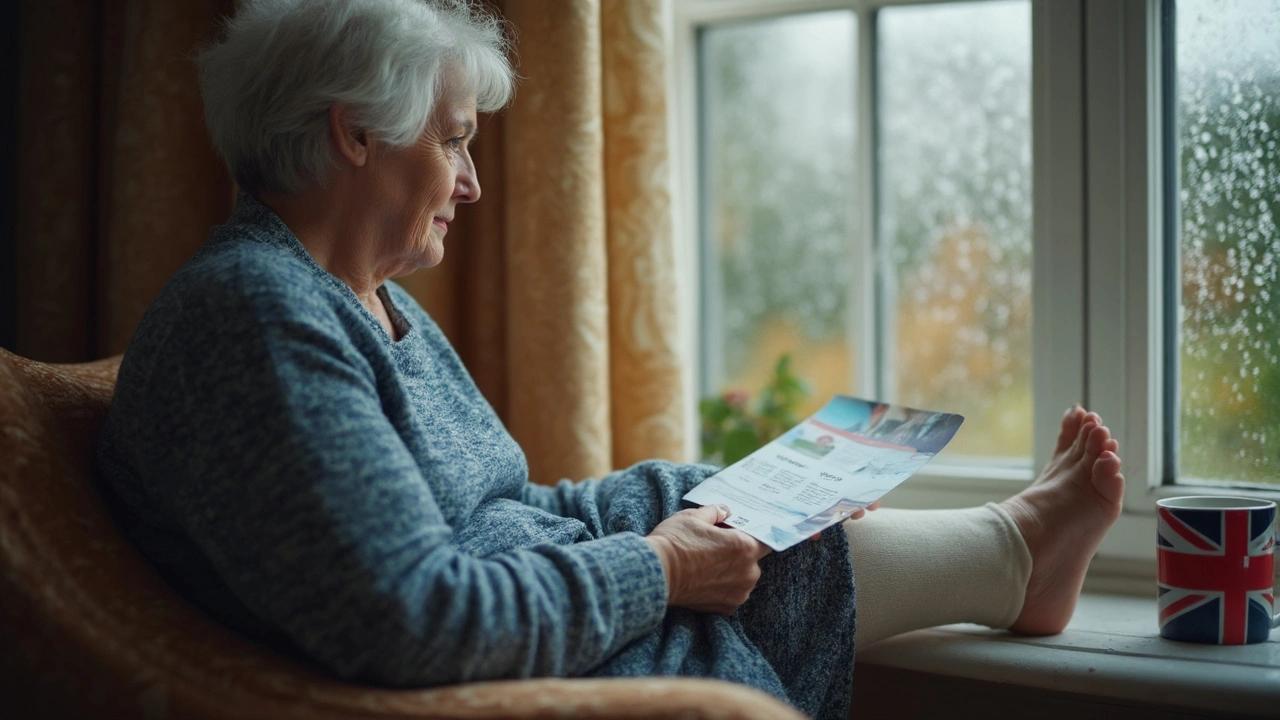Pulmonary oedema — what it is and why it can be dangerous
Pulmonary oedema happens when fluid builds up in your lungs' air sacs. That makes breathing hard and reduces oxygen going into your blood. Sometimes it comes on slowly; sometimes it hits fast and feels life-threatening. Knowing the signs and the basics of care can help you act fast and avoid trouble.
Signs and when to seek help
Watch for sudden shortness of breath, coughing up frothy or pink-tinged sputum, chest tightness, and a feeling of drowning when lying flat. You might also have rapid breathing, wheezing, anxiety, sweating, or pale/blue lips. If you or someone else has these symptoms, treat it as an emergency — call emergency services right away.
Some cases develop more slowly. If you notice increasing breathlessness with activity, waking at night gasping for air, or new swelling in your legs, book urgent medical review. Those are often signs of heart-related fluid buildup that needs treatment before it worsens.
Treatment, tests, and practical steps
At the hospital they’ll check oxygen levels with a pulse oximeter and may do a chest X-ray, ECG, blood tests (including BNP), and an echocardiogram to see how the heart is working. If a blood clot or infection is suspected, further scans and tests will follow.
Initial treatment focuses on improving oxygen and removing excess fluid. You may get oxygen, CPAP or BiPAP breathing support, and intravenous loop diuretics such as furosemide to kick fluid out through the kidneys. For heart-related (cardiogenic) cases, doctors often use nitrates to lower pressure in the lungs and sometimes inotropes like dobutamine if the heart is very weak. If the cause is fluid overload from kidney failure, dialysis might be needed.
Treating the underlying cause is key. That could mean fixing a heart attack, changing heart failure meds, stopping a drug that caused fluid retention, treating severe infection, or gradually reducing fluid for altitude-related oedema.
At home, if you have chronic heart failure, practical steps cut risk: take your medicines as prescribed, weigh yourself daily to spot rapid weight gain from fluid, follow salt and fluid guidance your doctor gives, and report new breathlessness early. For high-altitude plans, ascend slowly and consider preventive measures if you’ve had altitude-related pulmonary oedema before.
Quick action saves lungs and lives. If breathing suddenly worsens, don’t wait — emergency care is needed. If you’re managing chronic heart or kidney disease, regular check-ups and simple habits (med adherence, salt control, daily weights) go a long way toward preventing pulmonary oedema.
Understanding Oedema: Peripheral, Cerebral, And Pulmonary Swelling Explained
Curious why your ankles puff up or how the brain can swell dangerously? This article unpacks the three main types of oedema—peripheral, cerebral, and pulmonary. It digs into what makes each unique, symptoms to watch for, and tips on managing or preventing swelling. You'll find real tips, eye-opening facts, and clear insights on why oedema happens and what can be done about it. With everything from stats and risk factors to day-to-day advice, it's your go-to guide for understanding and handling serious swelling.
- View More
- 12

